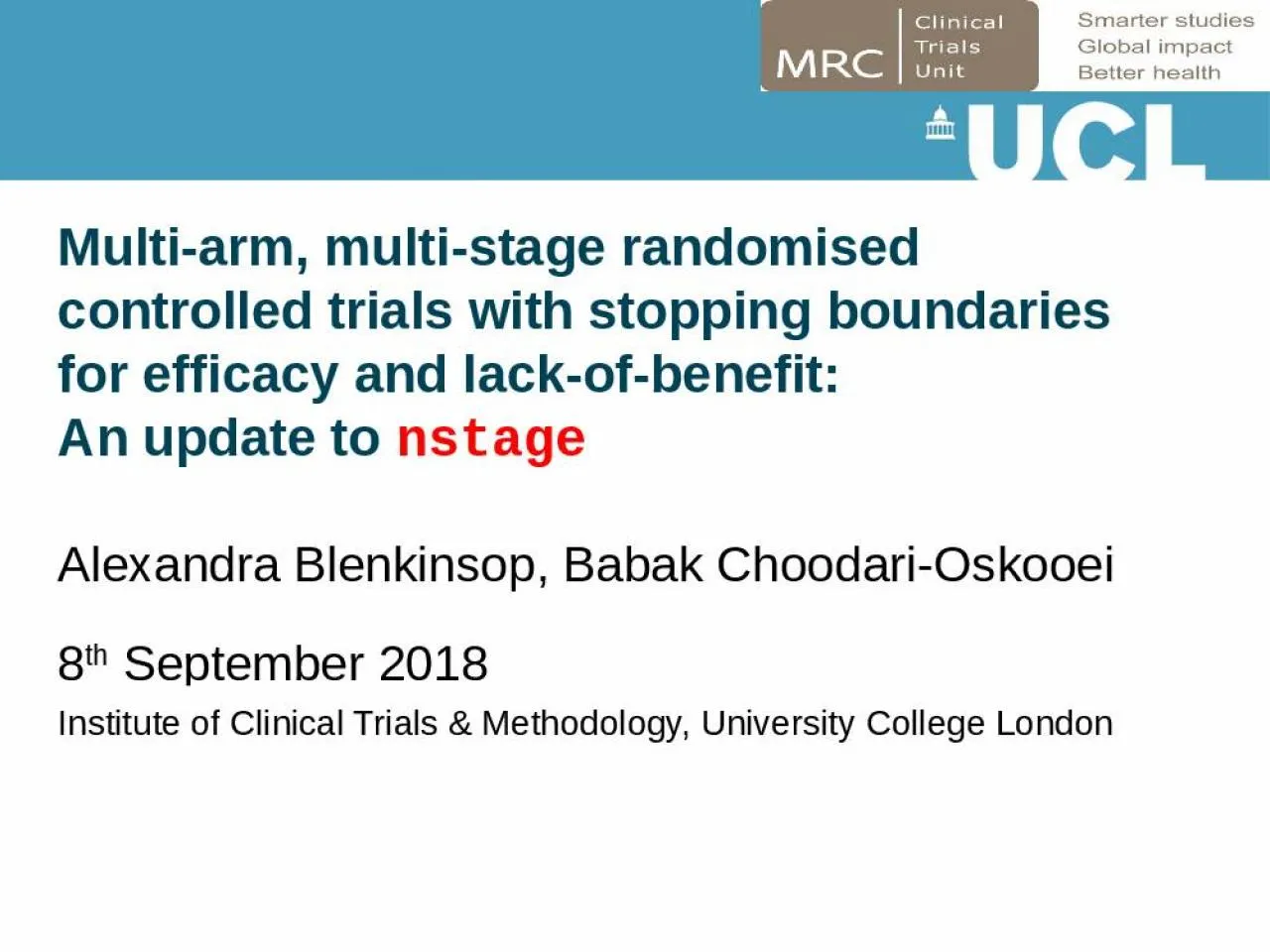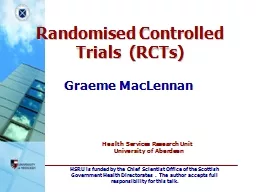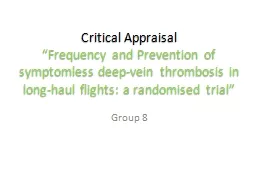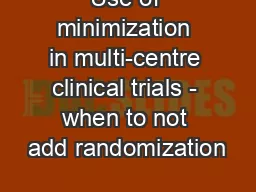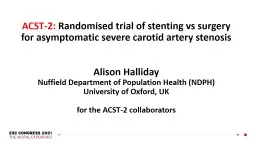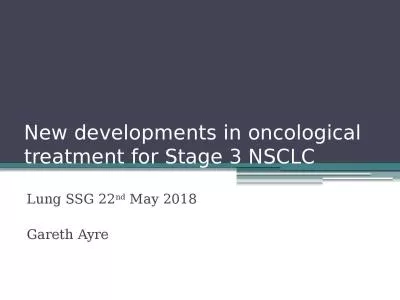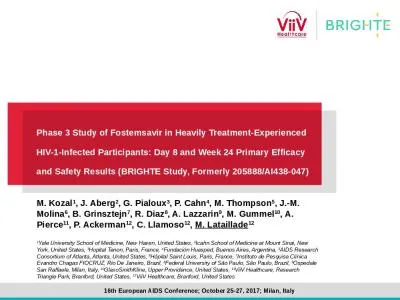PPT-Multi-arm, multi-stage randomised controlled trials with
Author : reagan | Published Date : 2022-02-15
stopping boundaries for efficacy and lackofbenefit An update to nstage Alexandra Blenkinsop Babak ChoodariOskooei 8 th September 2018 Institute of Clinical
Presentation Embed Code
Download Presentation
Download Presentation The PPT/PDF document "Multi-arm, multi-stage randomised contro..." is the property of its rightful owner. Permission is granted to download and print the materials on this website for personal, non-commercial use only, and to display it on your personal computer provided you do not modify the materials and that you retain all copyright notices contained in the materials. By downloading content from our website, you accept the terms of this agreement.
Multi-arm, multi-stage randomised controlled trials with: Transcript
Download Rules Of Document
"Multi-arm, multi-stage randomised controlled trials with"The content belongs to its owner. You may download and print it for personal use, without modification, and keep all copyright notices. By downloading, you agree to these terms.
Related Documents

